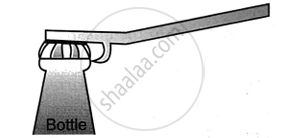Advertisements
Advertisements
Question
Answer the following.
State the principle of levers.
Solution
The principle of a lever states that the product of the load and the load arm is always equal to the product of the effort and the effort arm.
Load x Load arm = Effort x Effort arm Load Effort arm
`"Load "/ "Effort"`= `"Effort arm"/"Load arm"`
The above ratio is called the mechanical advantage of a lever.
APPEARS IN
RELATED QUESTIONS
How can you increase the mechanical advantage of a lever?
State three differences between the three classes of levers.
Answer the following.
Name the simplest of all types of machines.
Answer the following in a word or two or in a sentence.
Given an example of a Class I lever.
Answer the following in a word or two or in a sentence.
Give one example of a machine used to multiply speed.
Give one example of a class I lever where mechanical advantage is less than 1.
Both a pair of scissors and a pair of pliers belong to the same class of levers. Name the class of lever. Which one has the mechanical advantage less than 1?
Classify the following into levers:
A door
Name the class of the lever shown in the picture below:

A ______ lever will always have M.A. > 1.
